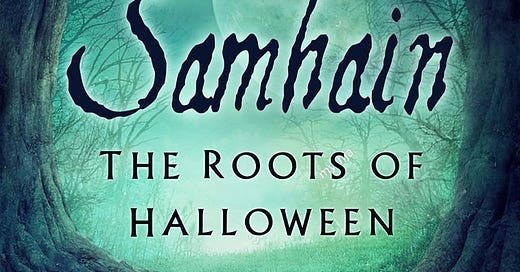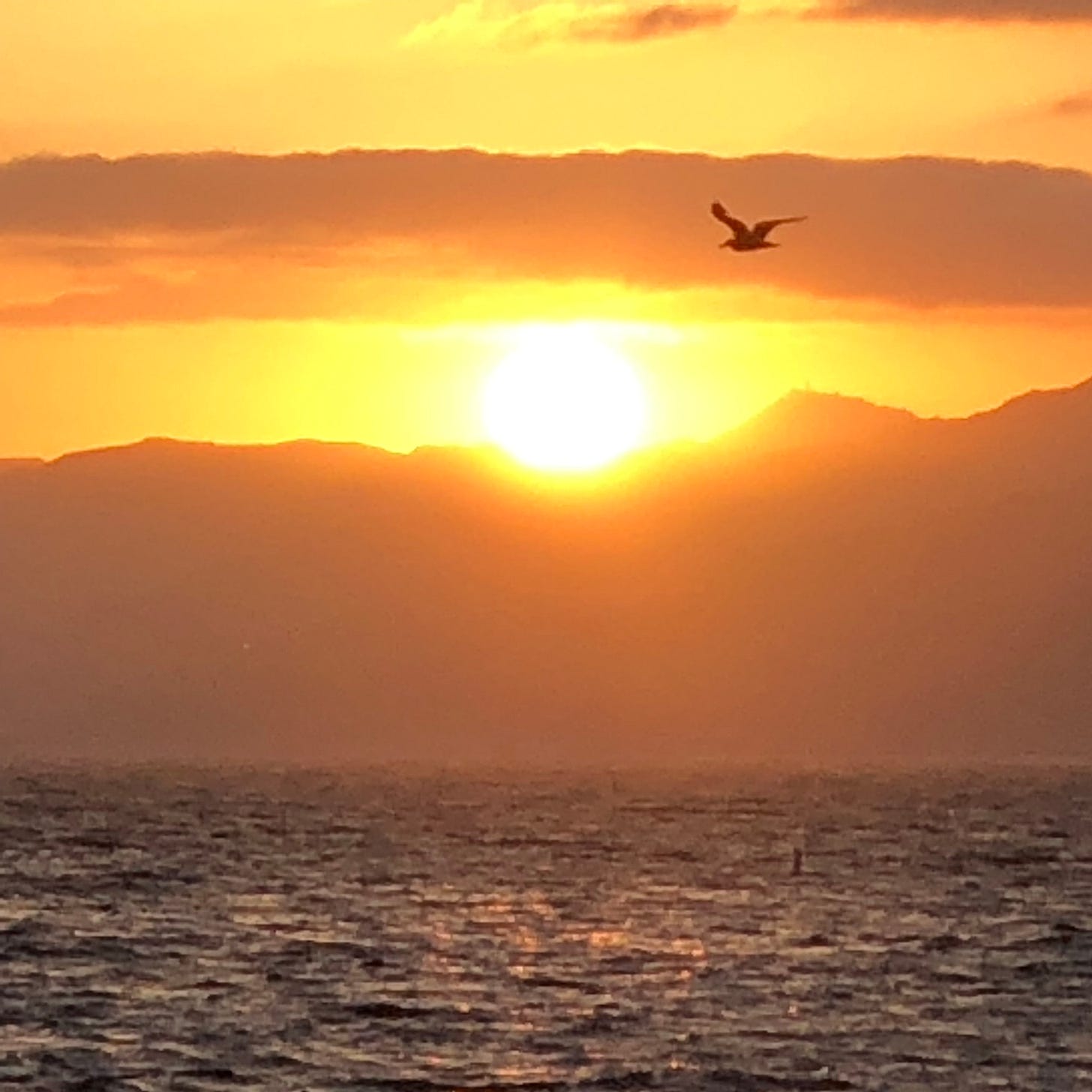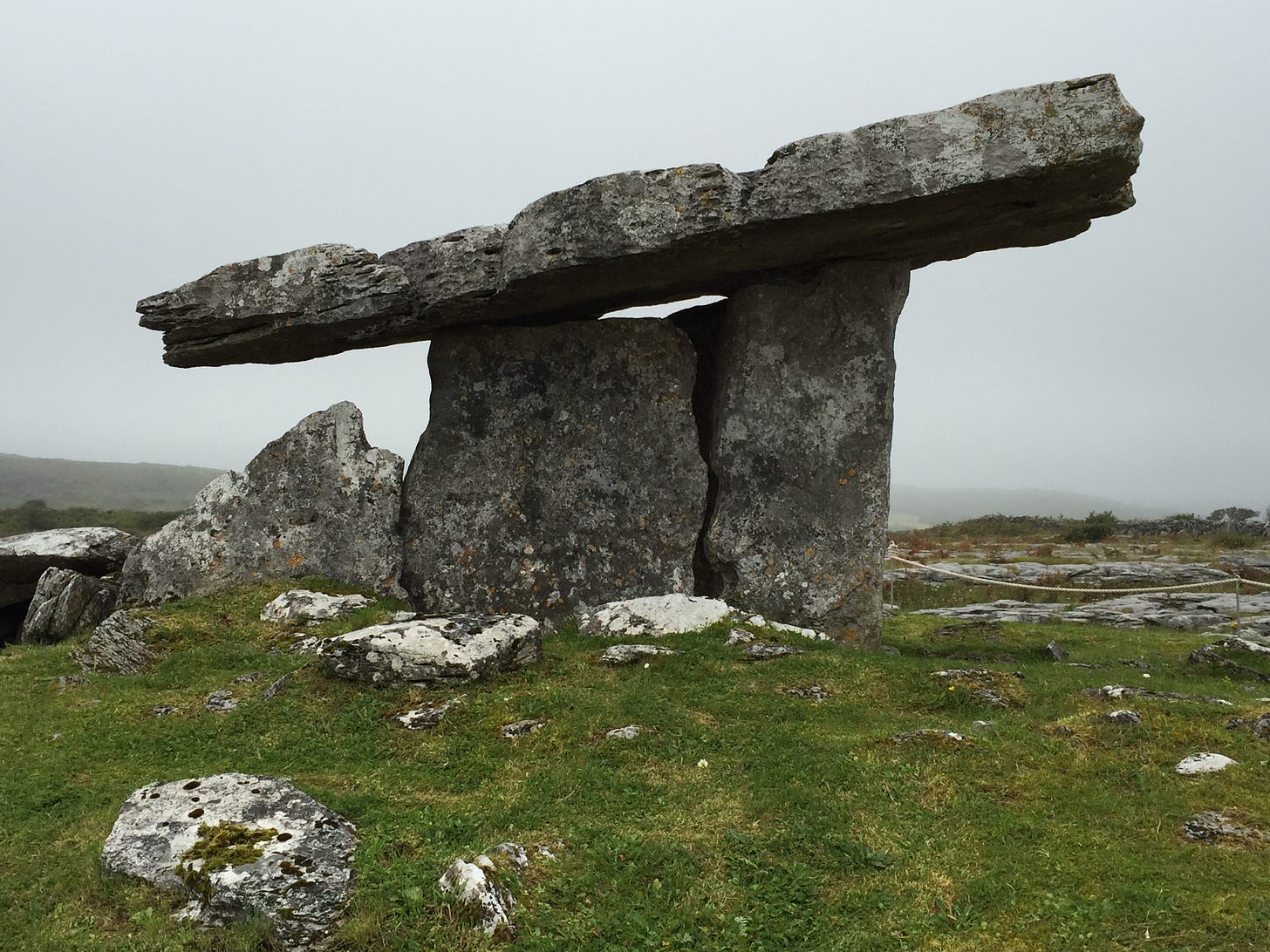Celtic Cosmology and the Roots of Halloween [BOOKS! Need I Say More? No. 3]
Excerpts from Luke Eastwood's 2021 book, "Samhain: The Roots of Halloween."
SEASONAL EDITION of “BOOKS! Need I Say More?”
With curated excerpts from
SAMHAIN: THE ROOTS OF HALLOWEEN
by Luke Eastwood
Check Out the Book » » » HERE
And Luke Eastwood’s website » » » HERE
CHAPTER 1: IRISH COSMOLOGY AND THE OTHERWORLD
p. 17: “The festival of Samhain can only be fully understood within the context of the pre-Christian cosmology and practices of the ancient Irish – what is referred to as Druidism or Druidry.”
pp. 17-18: “The pre-Christian view of the world and universe (or cosmology, if we choose to use a fancy term) survived both in the written word and the folk practices of the Irish, Scottish, Welsh, Breton and (to some extent) English peoples. It is to Ireland that we must look for the most complete model of how the Druids understood the world around them and what ways they celebrated the important moments of their year.”
Newgrange (Drew Dellinger)
p. 18: “The Irish year was divided into two halves – winter (geimhreadh) and summer (samhradh), with winter preceding summer.”
“In the same way as the year, the day was divided into two halves, with the night (from sunset) preceding the daylight. The year itself was subdivided into eight parts of approximately six weeks, each marked by a festival. These eight festivals began at the Celtic New Year, which was Samhain, summer’s end, which is considered the entry point into the dark part of the year.”
p. 20: “The Irish (and Welsh) pagans believed in three realms – the upperworld (Sky), middleworld (Earth), and otherworld (Sea).”
“Strictly speaking, the realm of the dead was not under the sea but beyond the horizon in the west, where the suns sets.”
(Drew Dellinger)
“Samhain – the time of year most strongly associated with the Irish otherworld, the sidhe [fairies] and the ancestors.”
(Drew Dellinger)
p. 24: “The various places of the Irish otherworld are generally beyond the sea, over the horizon in the west, or sometimes described as the ninth wave (another reference to 3 x 3). It should already be apparent that 3 was the most significant number in the ancient Irish world view – 3 realms, 3 cauldrons, 3 x 3 elements, 3 x 3 body parts, 9 directions.”
p. 25: “The general consensus is that the Irish believed the otherworld (the realm of both the ancestors/dead and the sidhe) lay in the west, the place where the sun disappeared to after sunset.”
CHAPTER 2: THE FESTIVAL OF SAMHAIN
“Samhain marks the pivotal point in the Gaelic year, the threshold between the summer and winter halves of the year.”
“With winter preceding summer, the old year ends and the new year begins at Samhain.”
p. 32: “Some believe that the ancient Samhain was celebrated over three days, while some suggest that the whole month of November was regarded as a liminal time of significance.”
p. 34: “Samhain marked the time of the return to darkness, the forces of life being absorbed into the earth or into the otherworld and a state of death or hibernation occurring until spring returned at Imbolc. It was at Samhain that final harvests were collected and any excess livestock were ritually slaughtered for feasting, as offerings, and also food was preserved for the winter. To this day, it is supposed that picking blackberries after Halloween is bad luck.”
“As indicated in the ancient texts, it was thought that the boundary between the everyday realm of earth and the otherworld became thin, or even nonexistent at this time, with the Sidhe and the dead being able to easily penetrate into the human world.”
p. 35: “In order to protect the home and people, various herbs were used – rosemary, vervain, rowan, mugwort and others. Iron pins were often worn to keep the sidhe away.”
They’re Eating the Dogs?
p. 37: “Since ancient times Samhain has been associated with prophesy and divination. The Druids were well known to perform divination. One particular form, Tarbhfeis, involved eating the flesh of a dog and the Druid being wrapped in a bull’s hide to aid their clairvoyance while in a sleep/trance.”
“Samhain was considered the most opportune time for divination and it was also a time when the whole country gathered in celebration, with the most important people being gathered together at Tara for the feast and assembly of Samhain.”
“It is well recorded that Samhain was celebrated in ancient times at the hill of Tara.” —Luke Eastwood. Hill of Tara, Ireland. (Drew Dellinger)
p. 40: “It was common for young people, until recent times, to go out and cause havoc and harmless mischief in impersonation of the spirits of the dead and the sidhe, who could be capricious. This has clearly evolved into the modern tradition of ‘trick or treat.’”
“As a time devoted to the dead (the ancestors). it was common to set a place at the dinner table for the departed… Candles were lit in the window(s) to help guide the spirits of the ancestors to the family home. Windows and doors were also left ajar to aid the spirits of the family dead to enter the home.”
CHAPTER 5: THE EVOLUTION INTO HALLOWEEN
p. 111: “The bonfire was a big tradition at Samhain, throughout the British Isles.”
“In Scotland it was common to light a fire on top of a barrow, tumulus or burial mound.”
No Salt for the Fairies
p. 114: “Food was also left for the fairies specifically, to appease them on Halloween night. A portion of mashed potato or colcannon might be left by the hearth or possibly outside the house.”
“‘The first plate of this colcannon is kept for the fairies lest they should be hungry while changing from the Summer residence to their Winter home. No salt should be put on their portion.”








